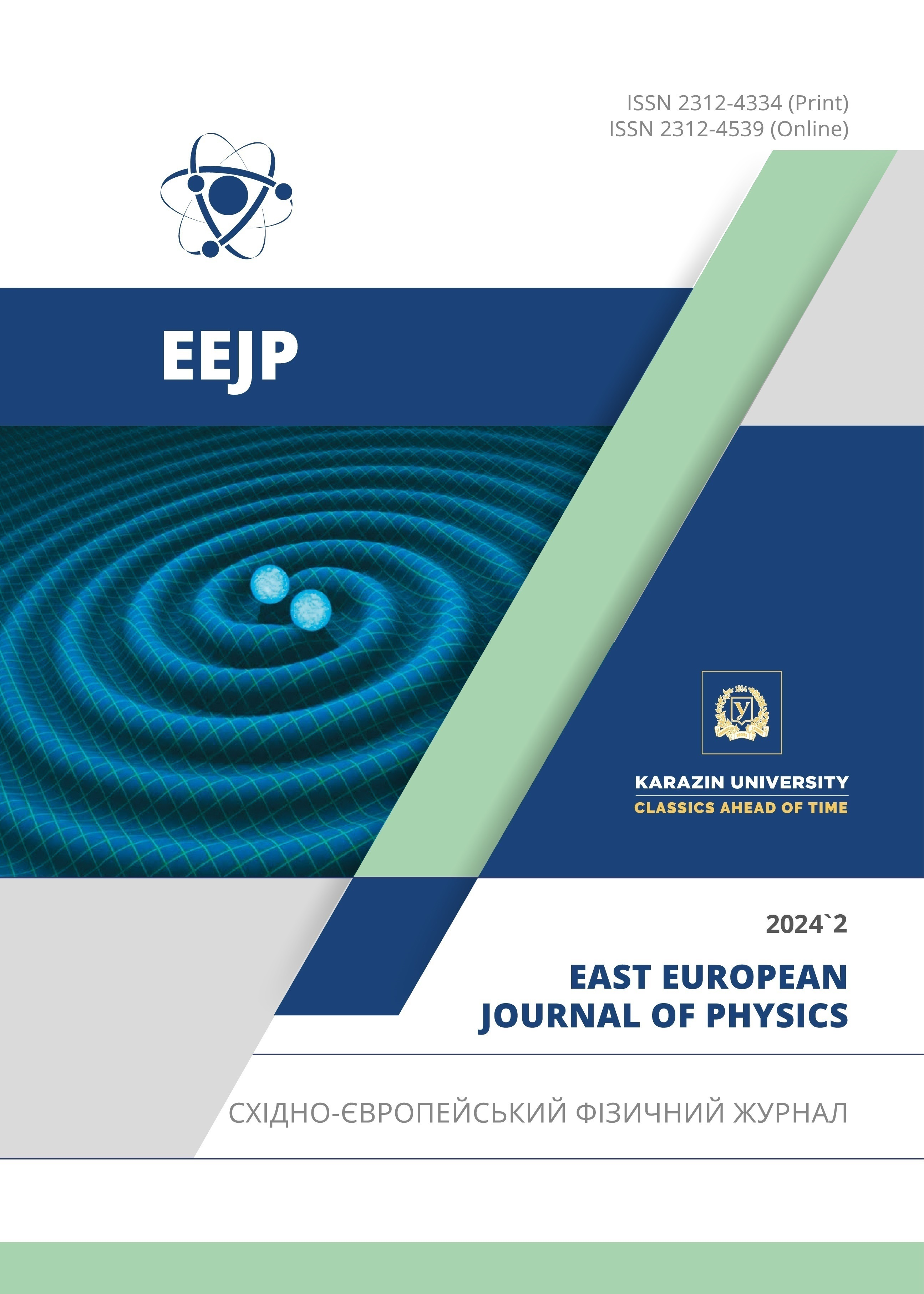SCAPS Numerical Analysis of Graphene Oxide/Zirconium Disulfide Solar Cells
Abstract
This work studies the performance of solar cells composed of two different materials, graphene oxide (Go, hole transport material) and zirconium disulfide (ZrS2, electron transport materials) using the SCPAS -1D simulation. It has been found that Go/ZrS2 solar cells show better performance with high short circuit current, Jsc, of 38 mA/cm2 and the power conversion efficiency, η, of 17% compared with other solar cells based on graphene oxide and perovskite materials. Additionally, the short circuit current density decreases from 38 mA/cm2 to 22 mA/cm2 when the energy gap of ZrS2 increases from 1.2 eV to 17 eV. The increasing the operating temperature and the work function of back contact also led to decrease the open circuit voltage and power conversion efficiency of the cells, while the short circuit current density was slightly enhanced. That is attributed to changes in the electrical properties of Go and ZrS2 layers, including their charge carrier mobility and characteristics of the interfacial layers.
Downloads
References
P. Omar, A. Khellaf, and K. Mohammedi, Renew Sust. Energy Rev. 23, 12 (2013). https://doi.org/10.1016/j.rser.2013.02.017
X. He, S. Khan, I. Oztyrk, and M. Murshed, Sustain. Dev. 31, 1888 (2023). https://doi.org/10.1002/sd.2491
A. Reinders, and P. Verlinden, Photovoltaic Solar Energy: From Fundamentals to Applications, (Wiley Publishing, USA, 1988).
A. Polman, M. Knight, E. Garnett, B. Ehrler, and W. Sinke, J. Sci. 352, 6283 (2020). https://doi.org/10.1126/science.aad4424
P. Liu, C. Xiao, C. Xie, and W. Li, Nano Energy, 89, 106399 (2021). https://doi.org/10.1016/j.nanoen.2021.106399
H. Al-Dmour, D.M. Taylor, and J.A. Cambridge, J. Phys. D, Appl. Phys. 40, 5034 (2007). https://doi.org/10.1088/0022-3727/40/17/004
P. Sumesh, Sol. Energy Mater Sol. Cells, 192, 16 (2019). https://doi.org/10.1016/j.solmat.2018.12.016
M. Abdelfatah, A. El-Sayed, W. Isamil, V. Sittinger, and A. El-Shaer, Sci. Rep. 13, 4553 (2023). https://doi.org/10.1038/s41598-023-31553-4
Y. Park, K.S. Choi, and S.Y. Kim, Phys. Status Solidi, 209, 1363 (2012). https://doi.org/10.1002/pssa.201228040
M. Burgelman, P. Nollet, and S. Degrave, Thin Solid Films, 361-362, 527 (2000). https://doi.org/10.1016/S0040-6090(99)00825-1
H. Zerfaoui, D. Dib, M. Rahmani, K. Benyelloul, and C. Mebarkia, AIP Conference Proceedings, 1758, 030029 (2016). https://doi.org/10.1063/1.4959425
H. Al Dmour, East Eur. J. Phys, (3), 555-561 (2023). https://doi.org/10.26565/2312-4334-2023-3-65
F.X. Abomo Abega, A.T. Ngoupo, and J.M. Ndjaka, Int. J. Photoenergy, 21, 7506837 (2021). https://doi.org/10.1155/2021/7506837
N. Touafek, R. Mahamdi, and C. Dridi, Dig. J. Nanomater. Bios. 16, 705 (2021). https://chalcogen.ro/705_TouafekN.pdf
N.S. Noorasid, F. Arith, A.Y. Firhat, A.N. Mustafa, and A.S.M. Shah, Eng. J. 26, 1-12 (2022). https://doi.org/10.4186/ej.2022.26.2.1
D.W. Husainat, P. Ali, J. Cofie, J. Attia, A. Fuller, Darwish, AJOP, 8(1), 6 (2020). https://doi.org/10.11648/j.ajop.20200801.12
J.W. Lee, “Isothermal Electricity for Energy Renewal. PCT,” International Patent Application Publication Number WO 2019/136037 A1, (11 July 2019).
H. Al Dmour, R. Alzard, H. Alblooshi, K. Alhosanim, S. Al-Madoob, and N. Saleh, Front. Chem. 7, 1 (2019). https://doi.org/10.3389/fchem.2019.00561
K. Gong, J. Hu, N. Cui, Y. Xue, L. Li, G. Long, and S. Lin, Mater. Des. 211, 110170 (2021). https://doi.org/10.1016/j.matdes.2021.110170
H. Al-Dmour, S. Al-Trawneh, S. Al-Taweel, Int. J. Adv. Appl. Sci. 8, 128 (2021). https://doi.org/10.21833/ijaas.2021.06.015
J. Xi, L. Zheng, S. Wang, J. Yang, and W. Zhang, J. Comput. Chem. 42, 2213 (2021). https://doi.org/10.1002/jcc.26750
P. Sawicka-Chudy, Z. Starowicz, G. Wisz, R. Yavorskyi, Z. Zapukhlyak, M. Bester, and Ł. Głowa, Mater. Res. Express, 6, 085918 (2019). https://doi.org/10.1088/2053-1591/ab22aa
Copyright (c) 2024 Hmoud Al-Dmour

This work is licensed under a Creative Commons Attribution 4.0 International License.
Authors who publish with this journal agree to the following terms:
- Authors retain copyright and grant the journal right of first publication with the work simultaneously licensed under a Creative Commons Attribution License that allows others to share the work with an acknowledgment of the work's authorship and initial publication in this journal.
- Authors are able to enter into separate, additional contractual arrangements for the non-exclusive distribution of the journal's published version of the work (e.g., post it to an institutional repository or publish it in a book), with an acknowledgment of its initial publication in this journal.
- Authors are permitted and encouraged to post their work online (e.g., in institutional repositories or on their website) prior to and during the submission process, as it can lead to productive exchanges, as well as earlier and greater citation of published work (See The Effect of Open Access).








